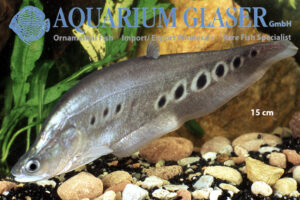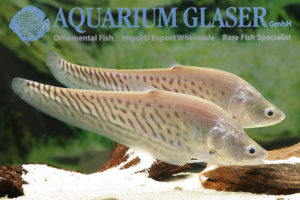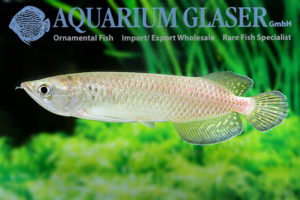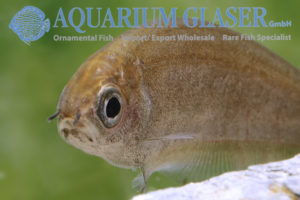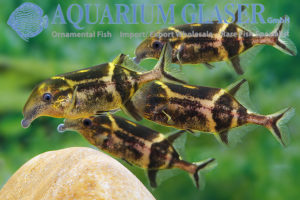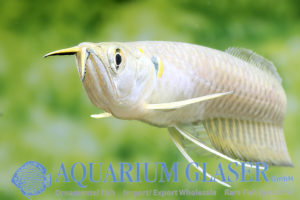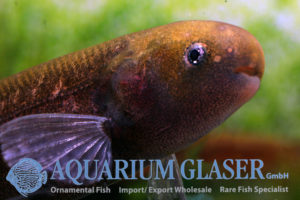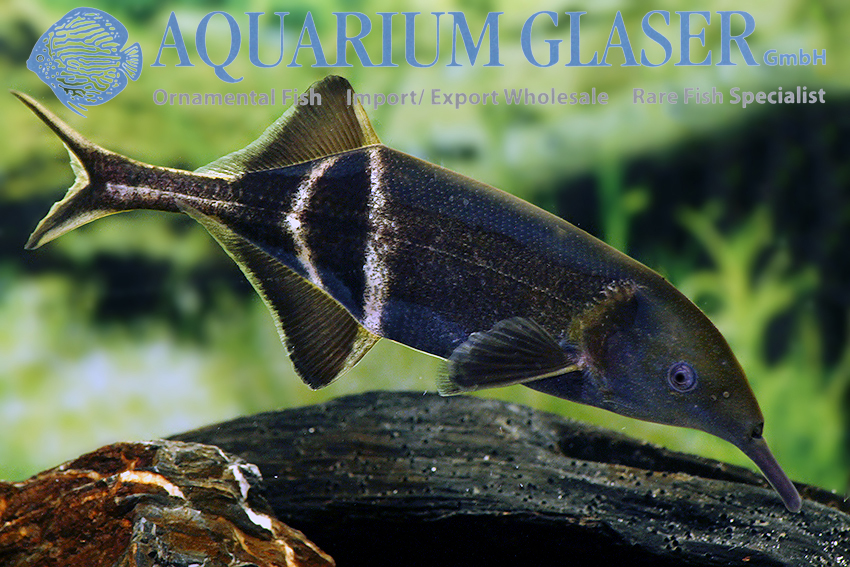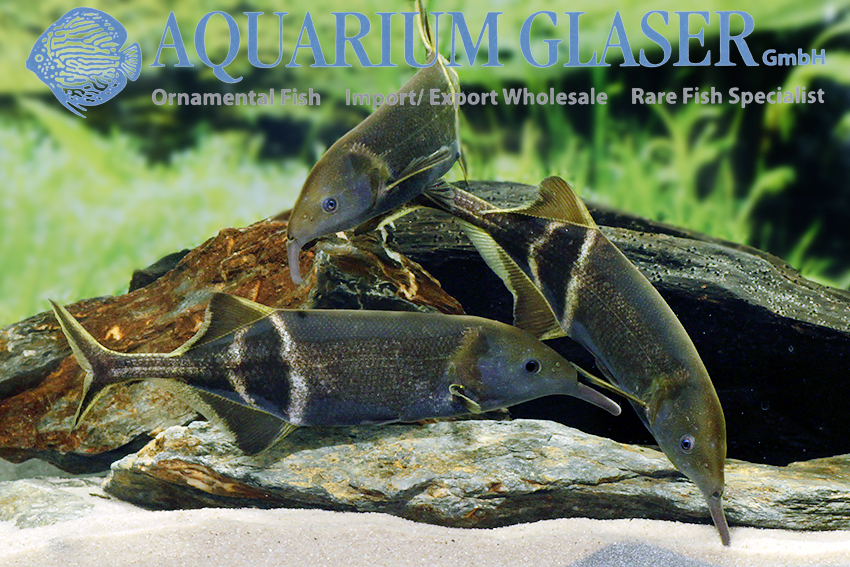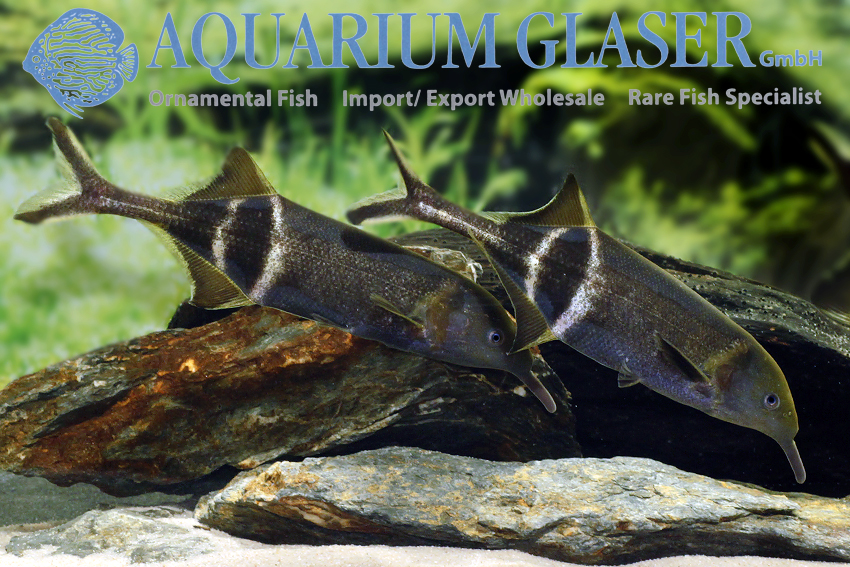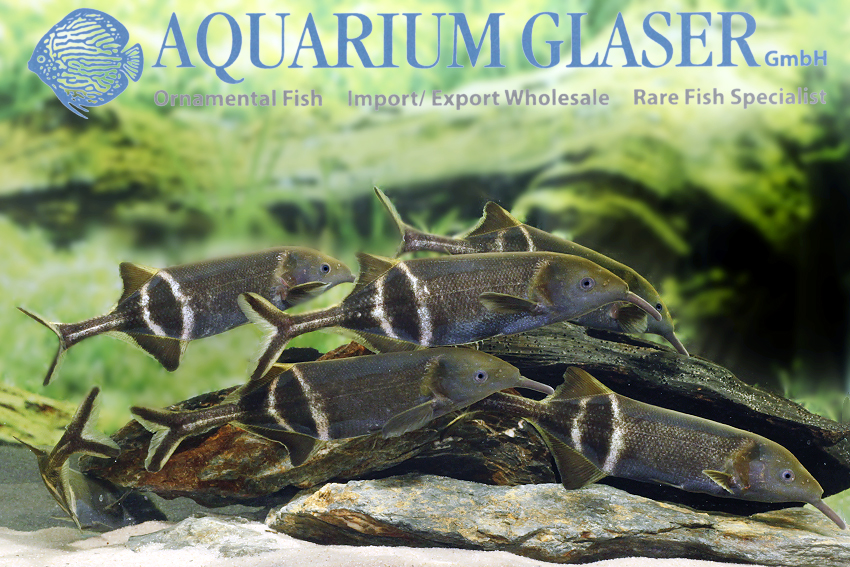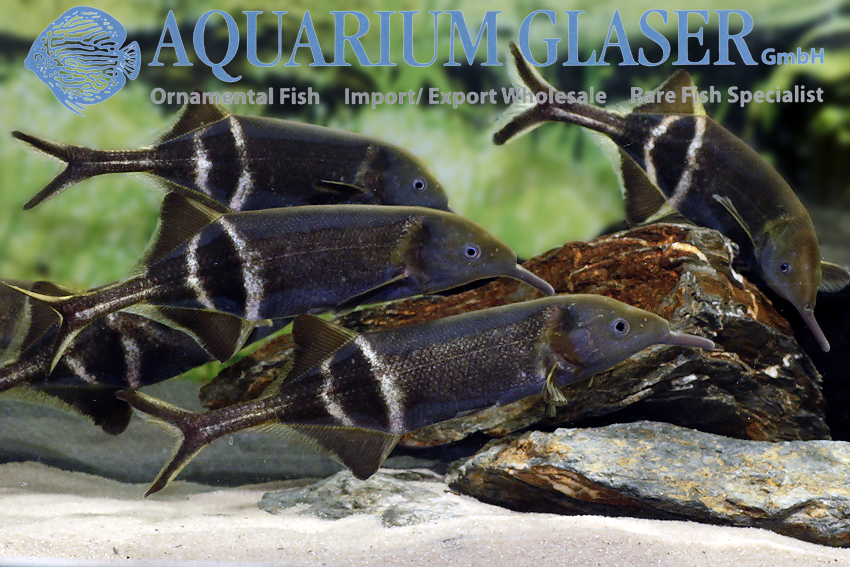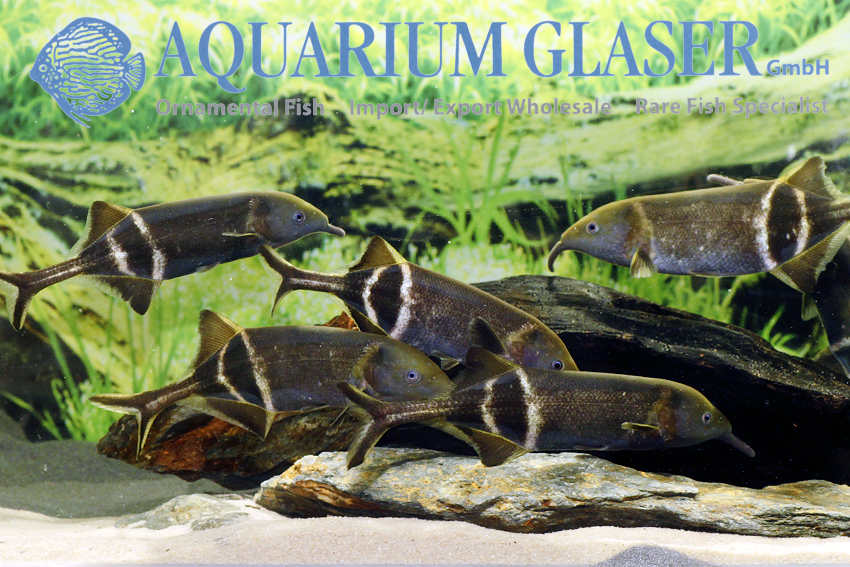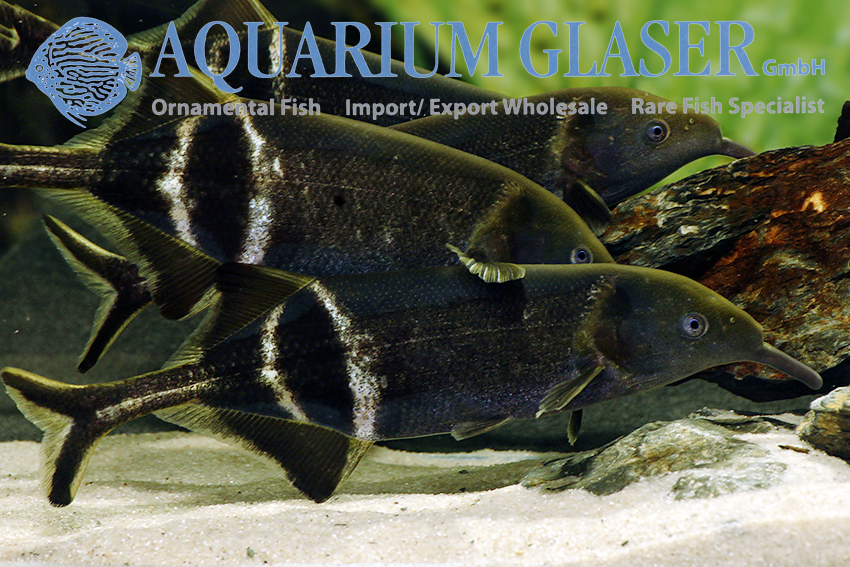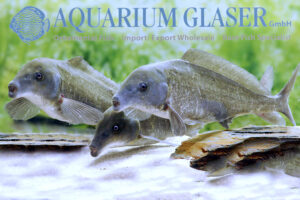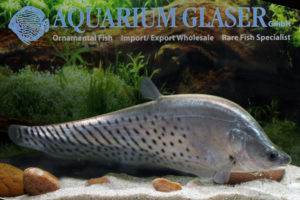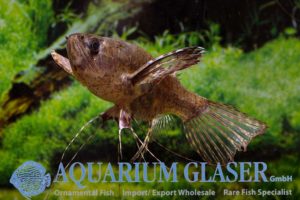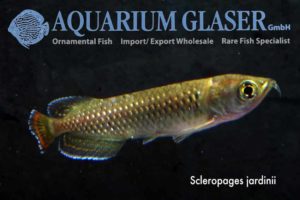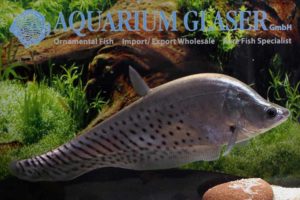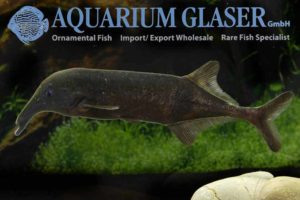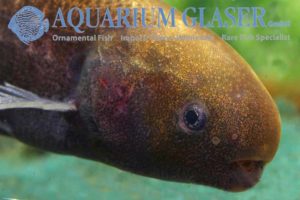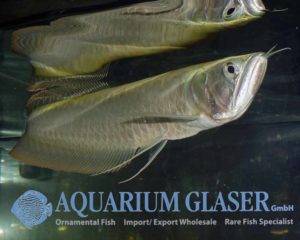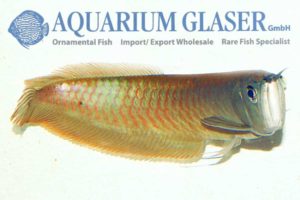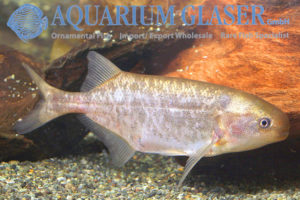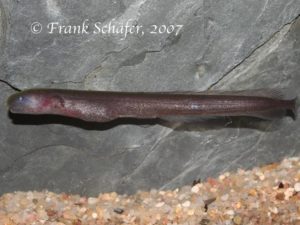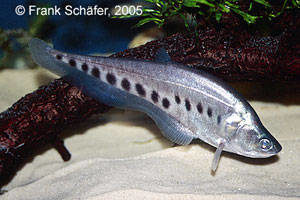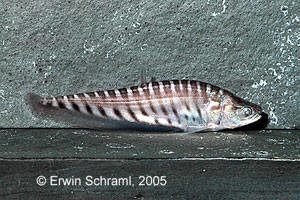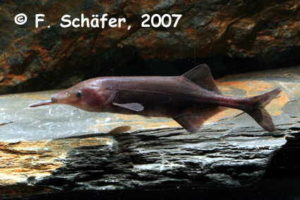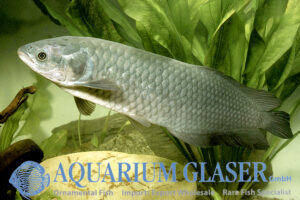The Asian knifefishes were long known to aquarists as Notopterus species. The American scientist Tyson Roberts revised the Afro-Asian knifefishes (Notopteridae) in 1992 and used the generic name Chitala Fowler, 1934, for the high-backed Southeast Asian knifefishes, also known as thousand-dollar fishes. Only the relatively flat-backed Asian species remain in Notopterus. The actual thousand-dollar fish […]
03. Bony tongues (23)
-
-
Chitala blanci
The Asian clown knifefishes with a well-developed dorsal fin were formerly grouped in the genus Notopterus. Currently, the genus Notopterus contains two externally indistinguishable species, N. notopterus and N. synurus, while the high-backed species have been transferred to the genus Chitala. From the genus Chitala we currently have the very attractive species Chitala blanci in […]
-
Scleropages jardinii
The bony tongues (Osteoglossidae) are ancient fish nobility. They bear witness to the time when Africa, India, Australia, Antarctica and South America still formed a coherent continent called Gondwana. It was during this time that the bony tongues evolved. About 150 million years ago, Gondwana broke apart and today’s continents were formed. As if on […]
-
Xenomystus nigri
Knifefishes are found in the Old World (Africa, Asia) and in the New World (South and Central America). However, the two groups are not closely related. Aquaristically, however, they are quite comparable. They inspire above all by their elegant swimming. The very special fin structure allows them to maneuver both forward and backward. At the […]
-
Campylomormyrus tamandua BRED
Elephant fishes or mormyrids are very interesting and also entertaining fish. They communicate among themselves with electrical signals and have – similar to birds – a relatively well developed cerebellum. Their bizzare body shape makes them additionally interesting. However, they have little to offer in terms of color, mostly coming along in shades of brown […]
-
Osteoglossum bicirrhosum
One of the absolute classics among the large fish, which have been an indispensable part of the assortment of zoos, show aquariums and also private large aquariums for decades, is the silver arowana, Osteoglossum bicirrhosum, which is widespread in the Amazon region and the rivers Rupununi and Oyapock (Brazil, Colombia, Ecuador, Guyana, French Guyana and […]
-
Brienomyrus brachyistius
We obtained from Nigeria a species of mormyrid which we haven´t seen for years: Brienomyrus brachyistius. This comparably small species (maximum length reported is 17.cm, usually the fish becomes 10-12 cm long) is a close relative to the species B. niger, which we were also able to import again (see http://www.aquariumglaser.de/en/brienomyrus-niger_de_1152.html). The intelligent and playful […]
-
Mormyrus rume ( = “M. longirostris”)
We frequently receive this interesting mormyrid from Nigeria. The systematics of Mormyrus is confused; according to recent findings, there are five species in Nigeria, including M. rume; the shape of the snout is the best way to distinguish the species from each other; the species presented here used to be called M. longirostris (which is […]
-
Chitala blanci
The Asian featherbacks, which have a well developed dorsal fin, have been placed in the genus Notopterus for a long time. Nowadays the genus Notopterus is seen monotypic (it contains only the single species N. notopterus) and the high-backed forms have been placed in another genus, namely Chitala. Currently we have the very attractive species […]
-
Pantodon buchholzi
If there would be a Top Ten ranking on the most extraordinary species of freshwater fish of the world, this species would appear for sure: the African Butterfly fish, Pantodon buchholzi. We have this strange animal – it becomes about 10 cm long – always in stock. Our specimens originate from Nigeria. Pantodon can really […]
-
Scleropages jardinii and S. leichardti
The Bony tongues (Osteoglossidae) are real old high aristocracy among the recent fish species. They are witnesses of the ancient super continent of Gondwana, which included the recent parts of Africa, India, South America, Antarctica, and Australia. About 150 million years ago this super continent began to break. The Bony tongues drifted away from each […]
-
Chitala blanci
The Asian featherbacks, which have a well developed dorsal fin, have been placed in the genus Notopterus for a long time. Nowadays the genus Notopterus is seen monotypic (it contains only the single species N. notopterus) and the high-backed forms have been placed in another genus, namely Chitala. Currently we have the very attractive species […]
-
Campylomormyrus compressirostris
Currently only very occasionally importations from the DR Congo appear – mainly due to the unsatisfying flight situation. So it is highly appreciated that we finally were able to import some specimens of the bizarre genus Campylomormyrus that bear the common name elephant fishes. Systematics of Campylomormyrus are rather complicated; in all probability our fish […]
-
Brienomyrus brachyistius
This week we obtained from Nigeria a species of mormyrid which we haven´t seen for years: Brienomyrus brachyistius. This comparably small species (maximum length reported is 17.cm, usually the fish becomes 10-12 cm long) is a close relative to the species B. niger, which we were also able to import again (see http://www.aquariumglaser.de/en/fish-archive/miscellaneous-en/Brienomyrus_niger_en/). The intelligent […]
-
Osteoglossum bicirrhosum Platinum
-
Osteoglossum bicirrhosum
Code 273208
-
Brienomyrus niger
There are about 200 species of Mormyridae (Elephantfishes) in Africa. Some of them belong to the most important freshwater fish species of the continent, due to their abundance and good taste. In the aquarium hobby, on the other hand, mormyrids are only rarely seen. All mormyrids belong to the weakly electrical fishes and communicate on […]
-
Isichthys henryi
(29.Nov.2007) Currently in stock: one of the rarest Mormyrids in the world: Isichthys henryi. Our supplier from Guinea informed us that this item appear only 2-4weeks per year! So it only can be called luck to have nearly one hundret pieces right now in stock! To keep the single is recommended, because they are agressive […]
-
Chitala ornata, Clown Featherback
The Clown Featherback is well known to the hobby and has been imported as early as 1934 from South-East Asia. They are nocturnal fish and when they get older they become solitary. The fish tank should be decorated with dense patches of plants on the sides and back but should be kept with enough swimming […]
-
Chitala ornata „Striped“
This variation of the Clown Featherback has a very marked body pattern. The breeding of C.ornata In captivity has been succeeded on several occasions. The fish spawn on the hard substrate and the eggs are guarded by the male fish, who also fawns the eggs. In nature the care of the spawn is important for […]
-
Gnathonemus longibarbis
March 2007: From the environment of Lubumbashi, the second largest city the Congo comes Gnathonemus longibarbis to us. They were caught in close proximity to Bondaka and are probably for the first time in the trade. In nature they feed on water insects and their larvae, their final size probably lies at approx. 40cm. Since […]
-
Heterotis niloticus
As next the relative of the largest truly freshwater fish Arapaima gigas Heterotis niloticus has a large attractiveness. With a maximum length of scarcely about one meter it is however more suitable for the aquarium maintenance than its South American relatives. In Africa they originally inhabit different waters types south the Sahara. A difference to […]
Gnathonemus petersii – Peters’ elephantnose fish
Most often this bizarre mormyrid is kept as a single specimen. This is due to the fact that small groups of this fish most often don´t do well in a long time sight and they can perform mobbing against each other even to death. However, in the wild these up to 30 cm long, but rarely longer than 15 cm found animals form sometimes really large schools. In our facility they are kept in groups of about 50 animals in tanks of 200 x 60 x 60 cm. Here the elephant fish forms schools and shows a schooling behaviour as it is hardly seen in any other fish in the aquarium.
More information on Gnathonemus petersii is provided here: https://www.aquariumglaser.de/en/fish-archives/the_possibly_rarest_fish_in_the_world_lives_in_aquarium_glaser_s_fishhouse_en/
For our customers: the fish have code 133502 (7-10 cm) and 133503 (10-12 cm) on our stocklist. Please note that we exclusively supply the wholesale trade.
Text & photos: Frank Schäfer





